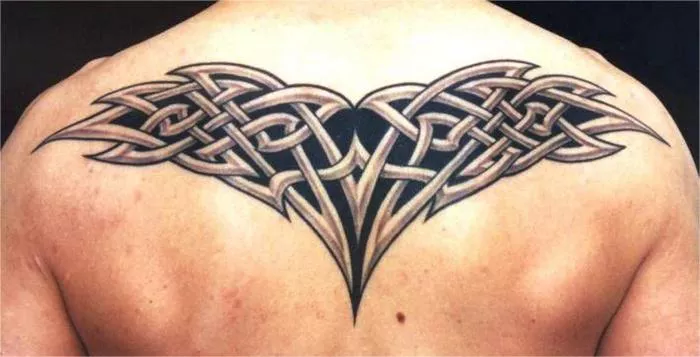In the vibrant tapestry of tattoo artistry, Celtic designs stand out as intricate, timeless, and deeply symbolic. These mesmerizing patterns, originating from the rich cultural heritage of the Celtic peoples, carry layers of meaning that transcend mere aesthetic appeal. From mesmerizing knots to enigmatic symbols, Celtic tattoos offer a window into ancient traditions, beliefs, and spirituality. In this comprehensive exploration, we delve into the profound symbolism behind Celtic tattoos, uncovering their significance and the stories they tell.
Origins and Evolution
To truly appreciate the symbolism of Celtic tattoos, it’s essential to understand their origins. The Celts, an Indo-European people, inhabited vast regions of Europe during the Iron Age, leaving behind a legacy that continues to captivate imaginations today. Their intricate artwork, characterized by interwoven patterns and symbolic motifs, reflected their close connection to nature, spirituality, and the cycles of life.
The earliest evidence of Celtic art dates back to around 450 BCE, with artifacts such as the famous Gundestrup Cauldron showcasing elaborate designs that would later inspire modern tattoo artists. Over the centuries, Celtic art evolved, influenced by interactions with neighboring cultures and the spread of Christianity. Despite these changes, the core symbolism of Celtic designs remained deeply rooted in tradition, preserving the essence of ancient beliefs and cultural identity.
Symbols of Strength and Protection
One of the defining features of Celtic tattoos is their use of symbols imbued with layers of meaning. Among the most popular motifs are those associated with strength, protection, and resilience. The Celtic knot, with its intricate interlacing patterns, symbolizes the eternal cycle of life, death, and rebirth. Its endless loops convey the interconnectedness of all things, while its absence of a beginning or end represents the timeless nature of existence.
Similarly, the Celtic cross, a fusion of the Christian cross and traditional Celtic motifs, represents the union of spiritual beliefs. It serves as a potent symbol of faith, courage, and divine protection, offering solace to those facing life’s challenges. For many, a Celtic cross tattoo is more than just a piece of body art; it’s a tangible expression of their beliefs and values.
Celebrating Nature and the Elements
Central to Celtic symbolism is a reverence for nature and the elements. The ancient Celts held deep respect for the natural world, seeing it as a source of wisdom, inspiration, and divine power. This reverence is reflected in Celtic tattoos featuring motifs such as the tree of life, which symbolizes the interconnectedness of all living beings and the cyclical nature of existence.
The shamrock, a symbol synonymous with Ireland and St. Patrick’s Day, holds special significance in Celtic culture. Traditionally associated with good luck and prosperity, the three-leaf clover also embodies the Celtic triad of mind, body, and spirit. A shamrock tattoo serves as a reminder of the interconnectedness of these elements and the importance of balance in life.
Navigating the Labyrinth of Life
Another intriguing aspect of Celtic symbolism is its use of labyrinthine patterns, such as the triskele and the labyrinth itself. These designs, characterized by intricate spirals and loops, represent the journey of life and the quest for self-discovery. The triskele, with its three interconnected spirals, symbolizes progress, evolution, and the eternal cycle of birth, life, and death.
Similarly, the labyrinth serves as a metaphor for life’s twists and turns, challenges, and triumphs. By navigating its winding paths, one embarks on a journey of self-reflection and personal growth. A labyrinth tattoo can serve as a powerful reminder to embrace life’s uncertainties and trust in one’s inner strength and resilience.
Guardians of Tradition
In addition to their aesthetic appeal, Celtic tattoos also serve as guardians of tradition, preserving ancient symbols and stories for future generations. For many people of Celtic descent, these tattoos are a way to honor their heritage and connect with their ancestors. Whether it’s a depiction of a Celtic warrior or a symbol of protection, these tattoos carry the weight of history and the pride of cultural identity.
In modern times, Celtic tattoos have transcended geographical boundaries, captivating people from all walks of life with their timeless beauty and profound symbolism. Whether worn as a tribute to Celtic heritage or simply as a form of self-expression, these tattoos continue to inspire awe and fascination, reminding us of the enduring power of ancient symbolism in a rapidly changing world.
Conclusion
Celtic tattoos are more than just ink on skin; they are portals to a world of ancient wisdom, symbolism, and spirituality. From the intricate knots that represent the eternal cycle of life to the protective symbols that ward off evil, each design tells a story that transcends time and space. By understanding the profound symbolism behind Celtic tattoos, we gain insight into the beliefs, values, and traditions of the Celtic peoples, ensuring that their legacy endures for generations to come.

